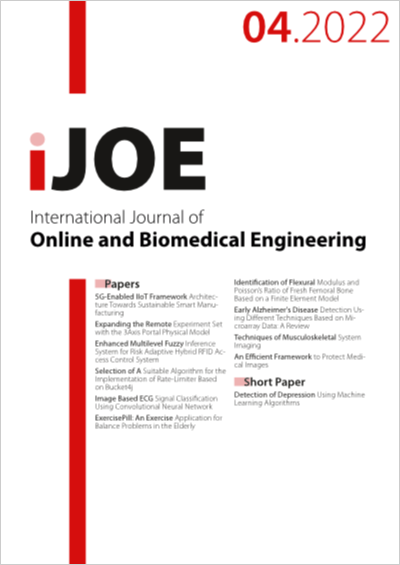Early Alzheimer's Disease Detection Using Different Techniques Based on Microarray Data: A Review
DOI:
https://doi.org/10.3991/ijoe.v18i04.27133Keywords:
Feature selection, Alzheimer’s Disease, Microarray Technology, Machine Learning, Deep LearningAbstract
Alzheimer's Disease (AD) is a degenerative disease of the brain that results in memory loss due to the death of brain cells. Alzheimer's disease is more common as people get older. Memory loss happens over time, and as a result, the person loses the ability to react appropriately to their surroundings. Microarray technology has emerged as a new trend in genetic research, with many researchers utilizing it to look at the changes in gene expression in particular organisms. Microarray experiments can be used in various ways in the medical field, including the prediction and detection of disease. Large amounts of unprocessed raw gene expression profiles sometimes contribute to computational and analytic difficulties, including selecting dataset features and classifying them into an appropriate group or class. The large dimensions, lesser sample size, and noise in gene expression data make it difficult to attain good Alzheimer classification accuracy using the entire collection of genes. The categorization process necessitates careful feature reduction. As a result, a comprehensive review of microarray Alzheimer's disease studies is presented in this paper, focusing on feature selection techniques.
Downloads
Published
How to Cite
Issue
Section
License
Copyright (c) 2022 shaymaa taha ahmed, Suhad Malallah Kadhem

This work is licensed under a Creative Commons Attribution 4.0 International License.



